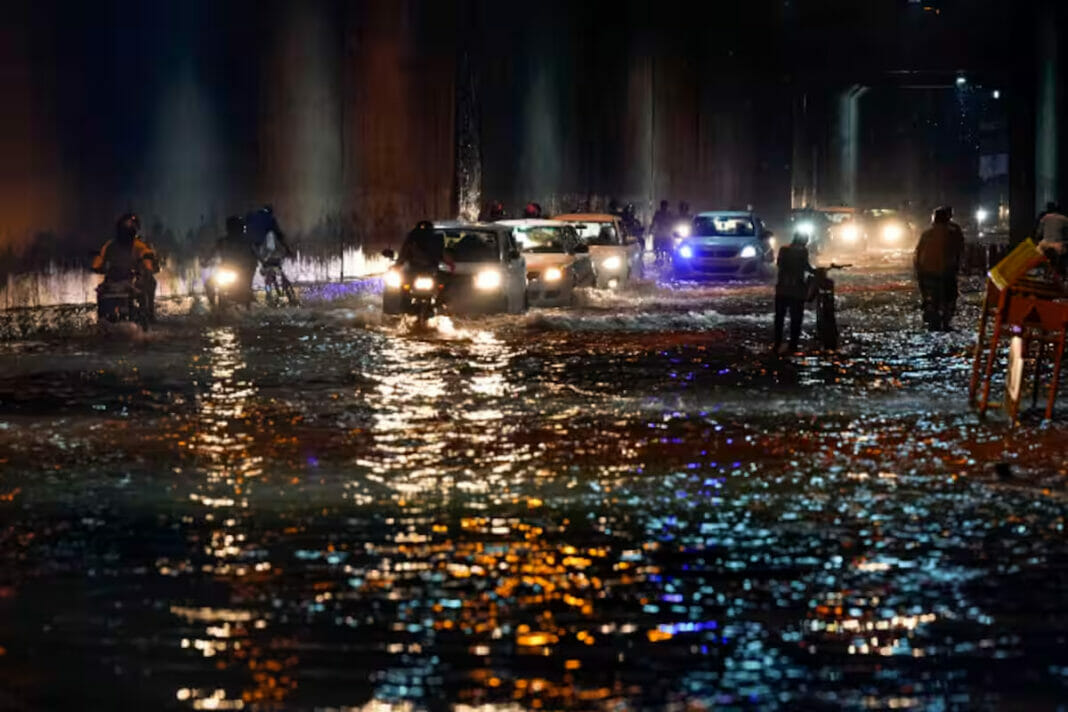Noida News: Despite the smiles on people’s faces brought on by the monsoon rains, there was turmoil in many places. The planned metropolis Gurugram, which is close to the nation’s capital, is similarly in poor shape. People were astonished and disturbed when they saw the condition, which was caused by waterlogging during the rainy season. It would not be incorrect to refer to the monsoon as Gurugram’s alternative name for trouble in this circumstance. Gurugram, a carefully designed metropolis, turned out to be false to its boasts. Gurugram is in far worse shape than other planned cities Noida and Greater Noida. Gurugram is regularly submerged in water during the monsoon season, but not Noida-Greater Noida. At the same time, even Delhi’s best neighbourhoods cannot withstand a lot of rain. Connaught Place and Khan Market were also found to be overflowing after just two days of rain. Let us explain the cause of this.
How Gurugram’s Insufficient Drain Network Contributes to Waterlogging Woes
The disparity in the quantity of drains between these two cities is the primary cause of waterlogging. For the same population, Gurugram relies on less than 40 km of drains, compared to Noida’s 87 km. While both cities have a combined population of roughly 30 lakh. In addition, a number of requirements must be met before selling land or a home in Noida to individuals or builders. Where a road, electricity, and sewer system is required. The land is only sold for residential or commercial use if these three prerequisites have been met. Noida has better planning than Gurugram, which prevents the city from water logging.
Architect Highlights Superior Infrastructure and Effective Drainage
The town planner and architect Archit Pratap Singh asserts that Noida’s planning is superior to Gurugram’s. Unlike Gurugram, government-owned land in Noida is developed for residential or commercial use only after receiving basic infrastructure improvements including power, roads, and sewers. offered for purchase. During periods of heavy rain, the city’s more than 87-kilometer-long drainage system is fully operational, and all of the water goes into the Hindon or Yamuna river. Archit added that waterlogging occurs in Noida as well, but that it clears up quickly because to a better drainage system. Regarding Gurugram, there are three drains, on the other hand. One drain, which also includes Ambience Mall, brings water from DLF 1, 2, and 3 as well as Sushant Lok-1 and MG Road. A third drain, which also includes IFFCO Chowk, brings water from other adjacent areas. The Najafgarh drain, according to architect and town planner Archit Pratap Singh, transports more than 60% of the city’s drainage. Even though it is only 27 kilometres long, this drain is still being built. This causes issues with the system and a lot of flooding in the city.
Floodwaters Engulf Connaught Place and Khan Market
There is a flood on the roads in places like Connaught Place and Khan Market, which are known as the centre of Delhi around the world. An estimate states that Delhi’s infrastructure cannot handle more than 50 mm of rain, and due to 155 mm of rain in two days, the entire city has experienced flooding. British carpet serves as the drainage system for Lutyens’ Delhi and Central Zone. The PWD, MCD Water Board, and Flood Department clean the drains in June or July in case of little rain and make ready for the monsoon.But in this case, the pattern of precipitation has abruptly changed, and now Delhi is experiencing significant water logging due to both summer and winter rains in addition to the monsoon.
Keep watching our YouTube Channel ‘DNP INDIA’. Also, please subscribe and follow us on FACEBOOK, INSTAGRAM, and TWITTER


